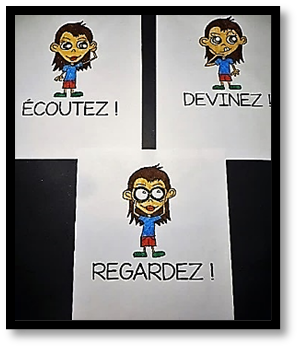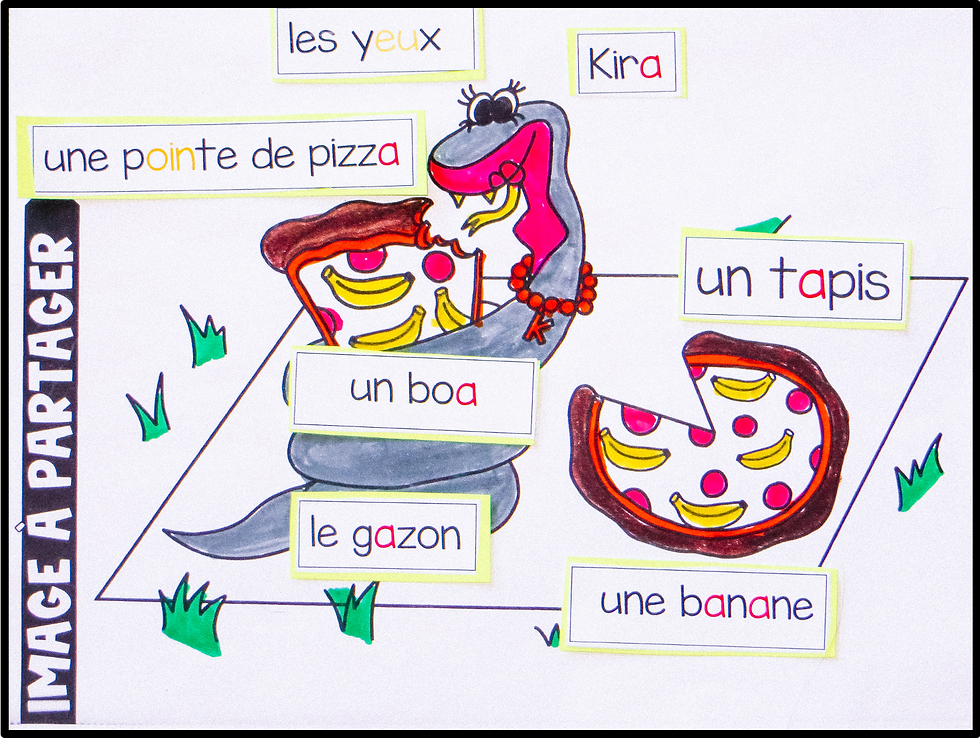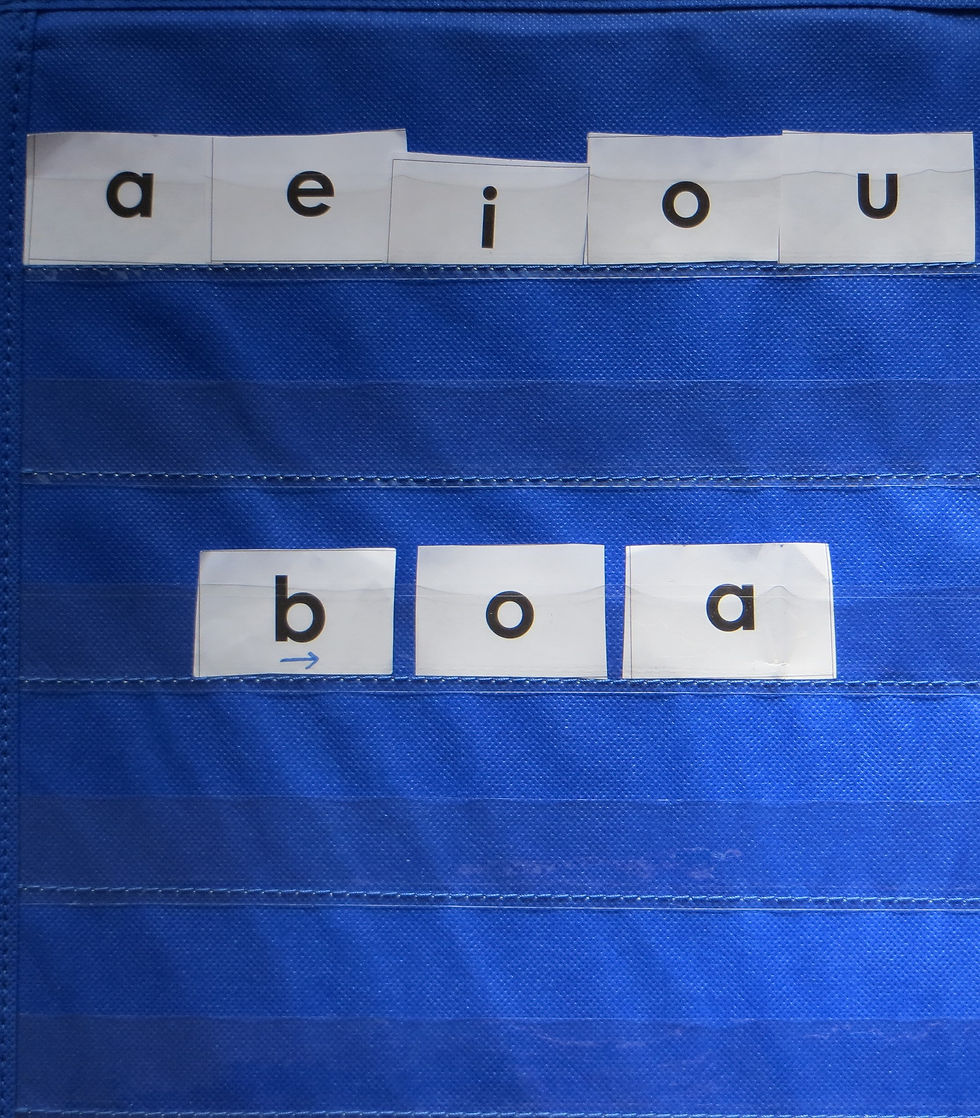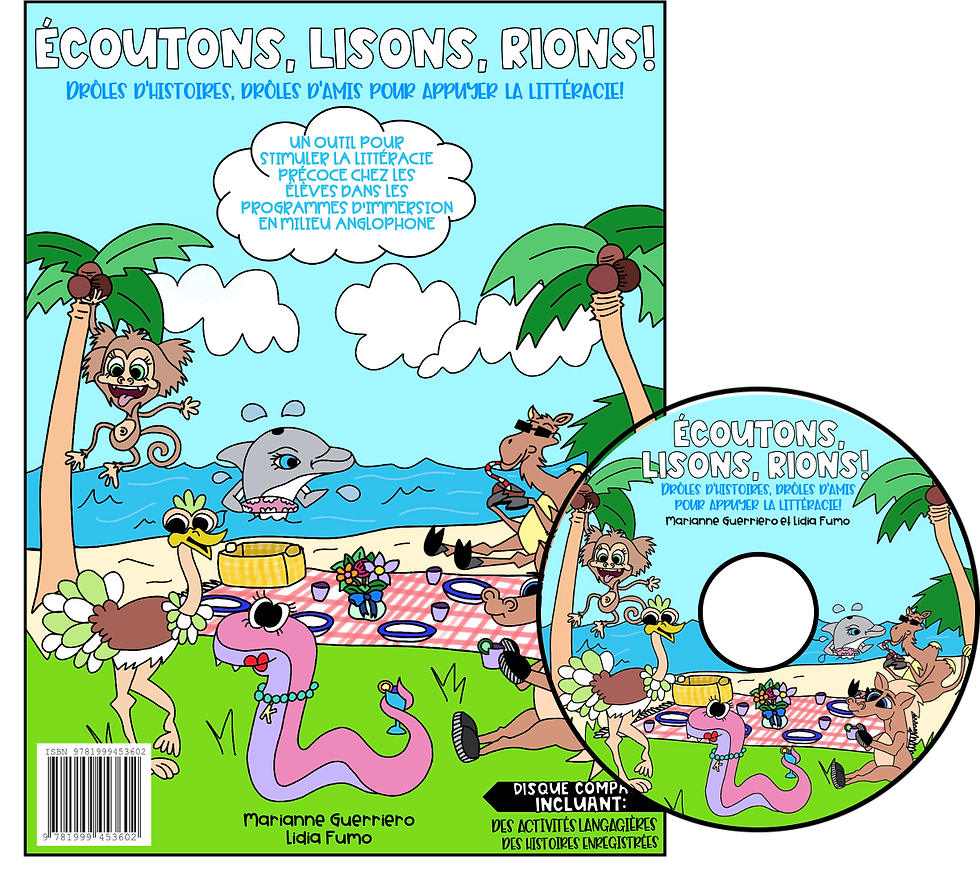It all Begins with a Text!
- FrenchTwistsFSL

- Nov 12, 2020
- 6 min read

Over the past several blogs, we have introduced you to Scarborough's rope to help acquaint you with the key precepts of learning to read. We have also discussed how these precepts influenced our own beliefs about learning to read as we set out to create the ELR resource to support primary French Immersion students learning the language code for the very first time. Today's blog will introduce you to a sample text and activity from our resource to show how language comprehension and word awareness skills can be addressed in a meaningful, contextualized manner. If you find the sample text and activity worthwhile, we will send you a free sample to try in your classroom! Contact information is provided at the end of this blog.
All language learning with ELR begins with what Dr. Louise Spear-Swerling calls a phonetically controlled text whereby "most words [are] controlled to the specific phonics patterns that children [are] learning" (Spear-Swerlng, page 102). There are a total of 15 phonetically controlled texts in the ELR resource: 5 comptines and 10 small narratives. The following ELR activity consists of an "Image à partager" that serves as an introduction to the comptine from the resource's first sound unit, Kira le grand boa. As the title suggests, the target French sound presented is /a/.
Let's Take a Picture Walk:
Engaging Language Comprehension Skills
All educators are familiar with the picture walk. This activity allows the teacher the opportunity to thumb through the pictures of a story so that students can infer the story's basic meaning. All 5 comptines of the ELR resource are introduced by "une image à partager" allowing for a picture walk of the comptine to be presented. In the second language classroom, picture walks are an effective way to teach students listening skills; specifically, how to infer what is being discussed in French and to discover vocabulary targeting the sound to be presented in the comptine.
Prior to initiating the student that I tutor virtually in a conversation around the image, I explicitly teach the student how to listen in French by using the resource's listening skill cards that encourage a student to:

-pay attention to non-verbal cues (i.e.: gestures, facial expresssions etc.);
-listen closely to words that may sound similar to English words that they know (i.e.: cognate words);
-take an educated guess at what is being said.
Once I have addressed how to listen for meaning with the student, I begin the picture walk with the following open ended question:

Que vois-tu dans cette image?
For some students, this question will illicit a flood of responses-in English of course- but the responses allow you to provide the target vocabulary in French. If the question does not resonate with your students, try asking a direct question instead: Dis-moi qu'est-ce que c'est?
During an on-line tutoring session with my student, I initially started out by asking him: Que vois-tu dans cette image?" When he seemed confused about my request, I then prompted the discussion by asking the second question: "Dis-moi qu'est-ce que c'est?" Here is the result of the conversation that followed:
Teacher: Dis-moi N, qu'est-ce que c'est? (pointing to snake)
Student: “It’s a snake!”
Teacher: “Oui, c’est un serpent. C’est un boa.
Student: Un boa??? Oh! A boa. It’s big!
Teacher: Oui, il est très grand! C’est quoi ça? (pointing to snake’s eyes)
Student: Eyes!
Teacher: Oui, les yeux!
Student: And it has big teeth!
Teacher: Oui, ses dents sont longues. Ce sont «des crochets».
Dis-moi c’est quoi ça? (pointing to pizza)
Student: It’s a pizza…with bananas on it????
Teacher: C’est ça! C’est une pizza avec des bananes!
Student: Yuck! Who puts bananas on a pizza?

The image and the vocabulary can be laminated, stored in a large ziplock bag and placed in a reading centre.
The student's running comments (i.e.: Yuck! Who puts bananas on a pizza?) is beneficial because it allows me to continue conversing in French while coaching the student in the art of paying attention to nonverbal cues to infer what I am saying in response. This reciprocal banter also allows me to assess the student's listening skills in real time while providing the student with timely feedback as to the proper/improper interpretation of the inferences made. The explicit teaching of listening skills improves a student's language comprehension over time while addressing the following Ontario curriculum expectations for early French Immersion learners:
A1.1 Listening Comprehension Strategies: (The Ontario Curriculum: FSL, p.202)
build background knowledge to bolster understanding, become aware of non-verbal cues to enhance the ability to infer
A1.2 Understanding Purposes for Listening: (The Ontario Curriculum: FSL, p.202)
B1.2 Producing Oral Communications: The Ontario Curriculum: FSL, p.205)
build general vocabulary that students can use during future verbal exchanges

From Picture Walk to comptine
Once the picture walk has been completed, students can then be introduced to the accompanying comptine, Kira le grand boa. ELR comptines are designed to be short, rhythmic texts that are easy for primary second language learners to learn and remember. Most words contain the featured targeted sound and a recorded version of the text is also included on CD. Vowel digraphs that differ from the featured vowel sound are highlighted to show difference in pronunciation and to cue the teacher that these sounds can be presented to students at the end of a sound unit so as to avoid any confusion at the beginning stages of learning. Teachers are encouraged to present the comptine in an animated way that includes gesturing key words that lend themselves well to actions (ex: grand-expanded arms, boa-hand making a slithering motion).
Working Word Awareness Skills 1: Using the comptine to Introduce the Featured French sound /a/.
Each of the three texts presented in an ELR sound unit is associated with the teaching of specific word awareness skills. Once a comptine is presented, the key vocabulary is used to:
-introduce the featured sound;
-practise identifying inital and final letter sounds within words;
-introduce the concept of syllables.
In this blog entry, I will explain how the the featured sound /a/ is presented to students.
Using the letter tiles included in the resource's CD, I will briefly introduce the students that I tutor to the 5 French vowels using a pocket chart. I am careful not to name the sounds by their letter name to avoid confusion with English letters. Here is an example:
Voici les 5 voyelles françaises: a, e, i, o, u.
On va apprendre d'avantage sur la voyelle /a/.
Voici la comptine, Kira le grand boa (I show students the poem from the previo
us day). Il y a beaucoup de mots qui contiennent la voyelle/a/. Pouvez-vous les trouver?

As the students share key vocabulary from the comptine, I will spell out the words using letter tiles on my plastic pocket chart. Although I am not formally teaching them any sound other than /a/, I make it a point to produce each individual letter sound as I spell the word to begin the process of having the students become "word aware" (i.e.: to notice that words are made up of individual phonemes or sounds).
Finally, I will encourage my students to produce the sound /a/ while noticing its place of articulation. In other words, as they produce the /a/ sound with me, I will encourage them to run their fingers over their lips and notice that their mouths are in an open position. This awareness comes in handy when students learn additional vowel sounds such as /an/ or /ain/. Helping students distinguish these sounds via place of articulation provides them with a point of reference as they learn to produce different French vowel sounds. This instructional process is repeated each time a new comptine with a new vowel sound is presented to students.

All 15 phonetically crafted texts come with a recorded version on CD. Listening skill cards and letter tiles are also available on CD.
WANT TO GIVE THIS ACTIVITY A TRY IN YOUR CLASSROOM?
CONTACT US!
If you want to give this sample text and activity a try in your classroom, send us an email at fumoguerriero@gmail.com. We will send you a free copy of the "image à partager" and the comptine to try with your FI students!!!
In our next blog: Teaching initial and final sounds using ELR's Mot mystère activity!
Bibliography:
ONTARIO MINISTRY OF EDUCATION (2013). French as a Second Language: Core French, Extended French, French Immersion. ON: The Ontario Public Service
Spear-Swerling, Louise (2015). The Power of RTI and Reading Profiles: A Blueprint for Solving Reading Problems. Maryland: Paul H. Brookes Publishing



コメント